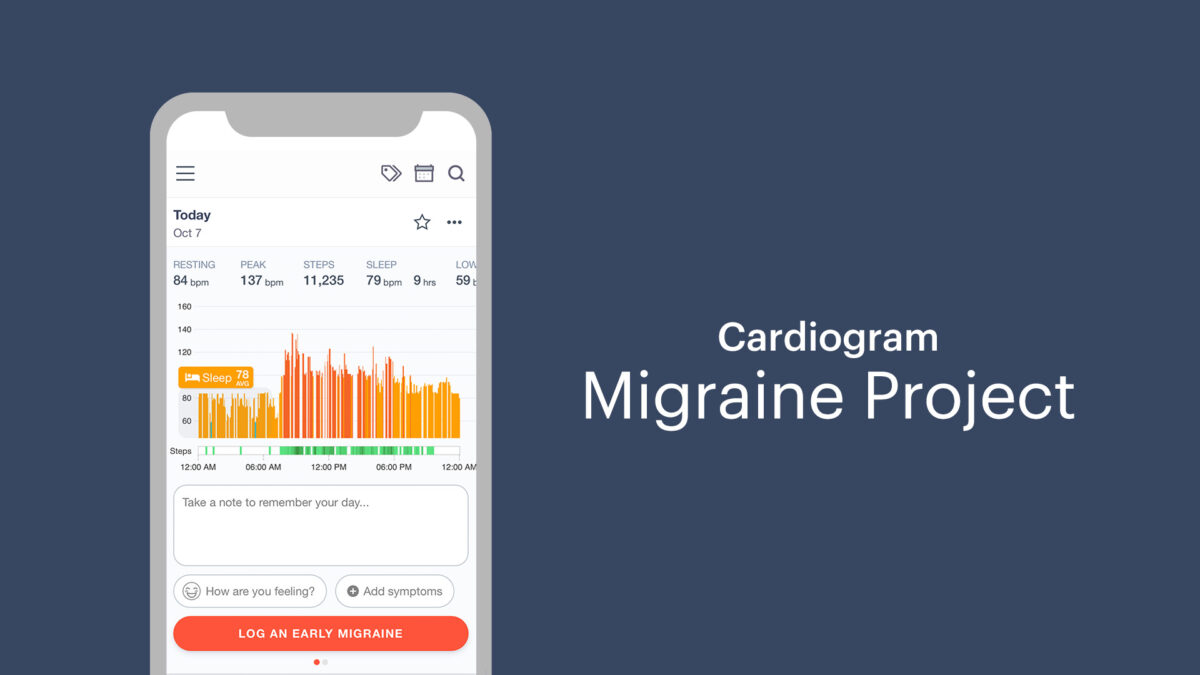Both Holter monitors and wearable devices have been found beneficial in detecting arrhythmias and heart rate abnormalities. But which device would be most beneficial overall? First, let’s look at the differences between the two:Holter MonitorsHolter monitors are compact, portable devices that take a continuous recording of your heart’s rhythm.(5) They are equipped with electrode stickers that stick to your chest and are …
Migraine Project: We’ve Officially Launched
In our Covid survey, sent out earlier this year, 22% of respondents indicated they suffer from migraines. That’s a pretty profound statistic. Enough so that we decided to kick off a migraine project in hopes of ultimately alleviating some of the suffering for our members! There are so many physiological processes that occur during the initial stages of a migraine …
Cardiogram 4.1.5 on Wear OS: Samsung Galaxy Watch 4 support, Wear OS 3 compatibility, on-watch heart rate chart, and more
Last week, Cardiogram released a complete redesign of our Wear OS app, with full support for Google’s new Wear OS 3 update.What’s Wear OS 3?Wear OS 3 is Google’s most significant update to their Wear OS system in nearly 3 years. The new operating system is initially available on the Samsung Galaxy Watch 4 only, which started shipping on August …
Screening with wearables—what do the clinical guidelines support?
Consumer wearables and traditional healthcare are on a collision course. The 170+ million wearables sold per year dwarf the scale of traditional medical devices, and they come with increasingly powerful health sensors. Multiple studies have now shown accurate detection of several health conditions using consumer wearables like Apple Watch, Garmin, and WearOS by Google paired with AI-based algorithms: Atrial fibrillation: …
New data shows wearables are no longer just for the worried well
1 in 4 Americans now own a wearable. While it’s often assumed that those who purchase a wearable consist of the “worried well,” the data says otherwise—among Cardiogram users, the average Apple Watch owner is now 41 years old, and more likely than the general population to manage a chronic condition. Today, we’re releasing our first Wearable Healthcare Usage Report, …






